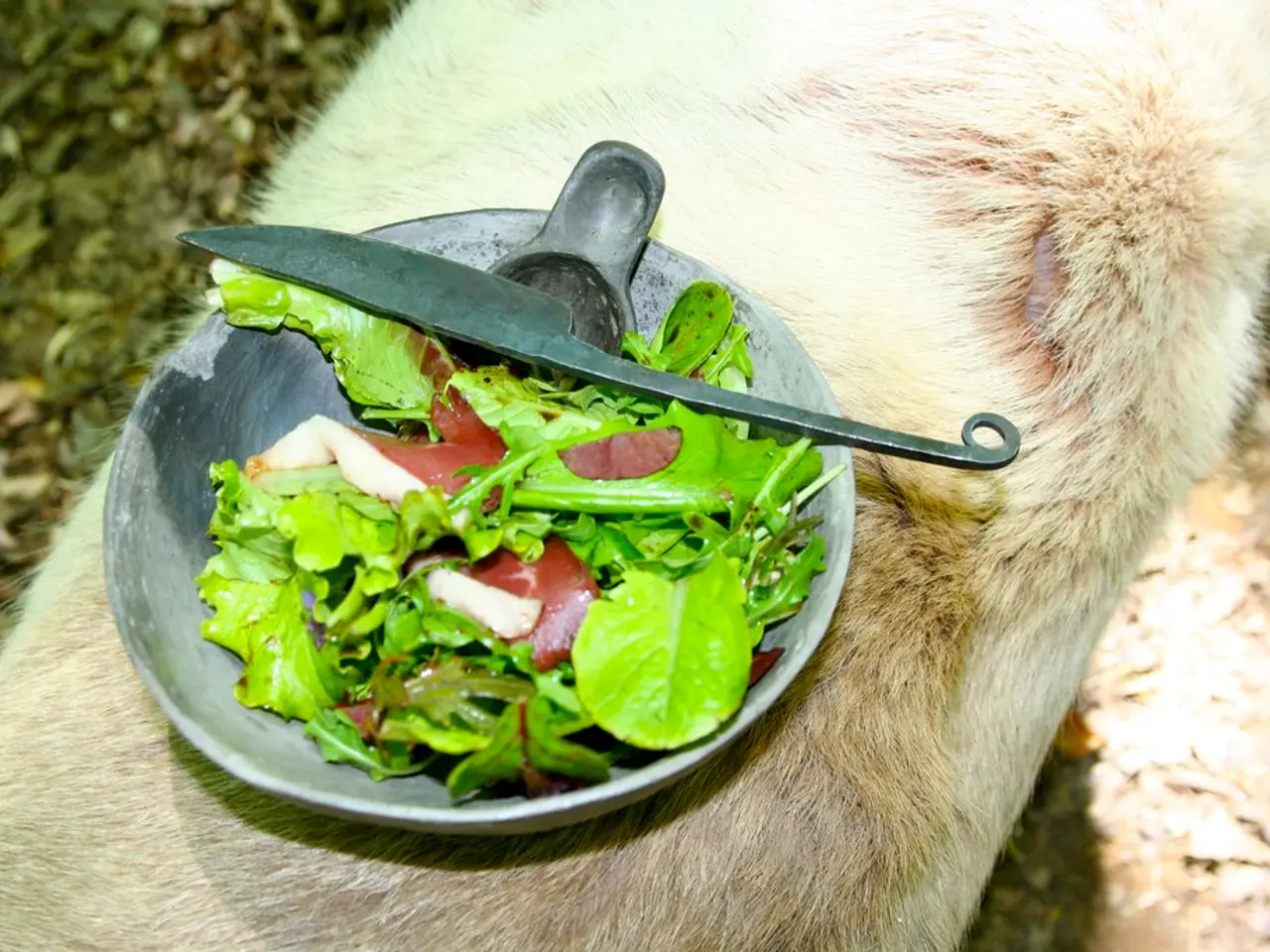Intestinal Villi
The small intestine, a vital organ in the digestive system, plays a crucial role in the absorption of essential nutrients. This tubular structure, approximately 40 meters long, is divided into three sections: the duodenum, jejunum, and ileum.
Covered with fine villi, which are finger-like projections, the small intestine's surface area is significantly increased, facilitating the absorption of proteins, fats, and fatty acids, as well as monosaccharides (simple sugars) and disaccharides (double sugars). The villi also house a large number of microvilli, further increasing the surface area for nutrient absorption.
Inside the small intestine, bile salts, pancreatic enzymes, and other digestive juices mix with the food to aid in digestion. The small intestine's pH increases due to secretions from the pancreas, creating an optimal environment for enzymatic digestion of proteins, carbohydrates, and fats.
The absorption process in the small intestine is regulated by hormones such as secretin and cholecystokinin, which are released in response to the presence of food. These hormones signal the pancreas to release digestive enzymes and the gallbladder to release bile.
The small intestine is also responsible for the absorption of essential amino acids from proteins, fat-soluble vitamins like A, D, E, and K, and vital minerals and water. The structure and function of the villi in a cow's small intestine are similar to those in other mammals, including humans, demonstrating the universal importance of this organ.
The small intestine's muscular walls undergo continuous contractions, known as peristalsis, to move food along. This movement, combined with the increased surface area provided by the villi, ensures efficient nutrient absorption.
Research involving the small intestine has been conducted on various species, including humans, mice, chickens, fish, mussels, and corals, providing valuable insights into the digestive process and nutrient absorption.
The University of Waikato Te Whare Wānanga o Waikato provides an image for contextual reference in this article. Understanding the small intestine's role in our bodies can help us appreciate the complex and intricate processes that occur within us every day, enabling us to maintain good health and wellbeing.
Read also:
- Peptide YY (PYY): Exploring its Role in Appetite Suppression, Intestinal Health, and Cognitive Links
- Toddler Health: Rotavirus Signs, Origins, and Potential Complications
- Digestive issues and heart discomfort: Root causes and associated health conditions
- House Infernos: Deadly Hazards Surpassing the Flames








